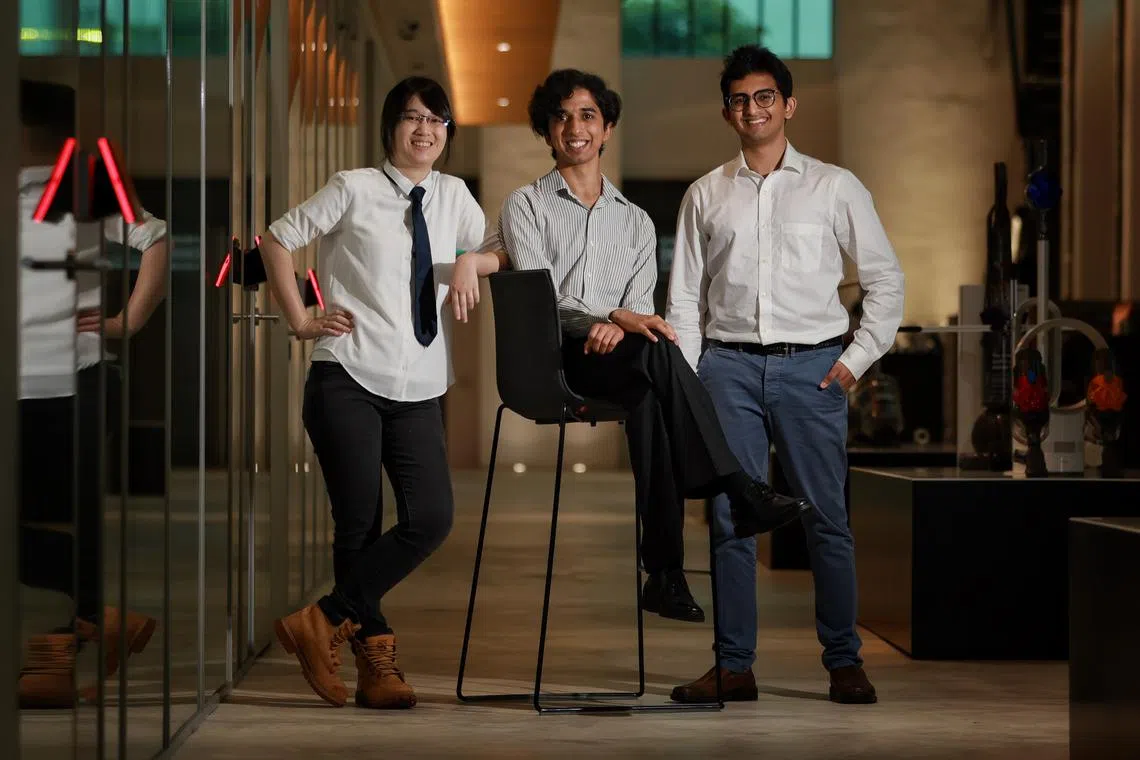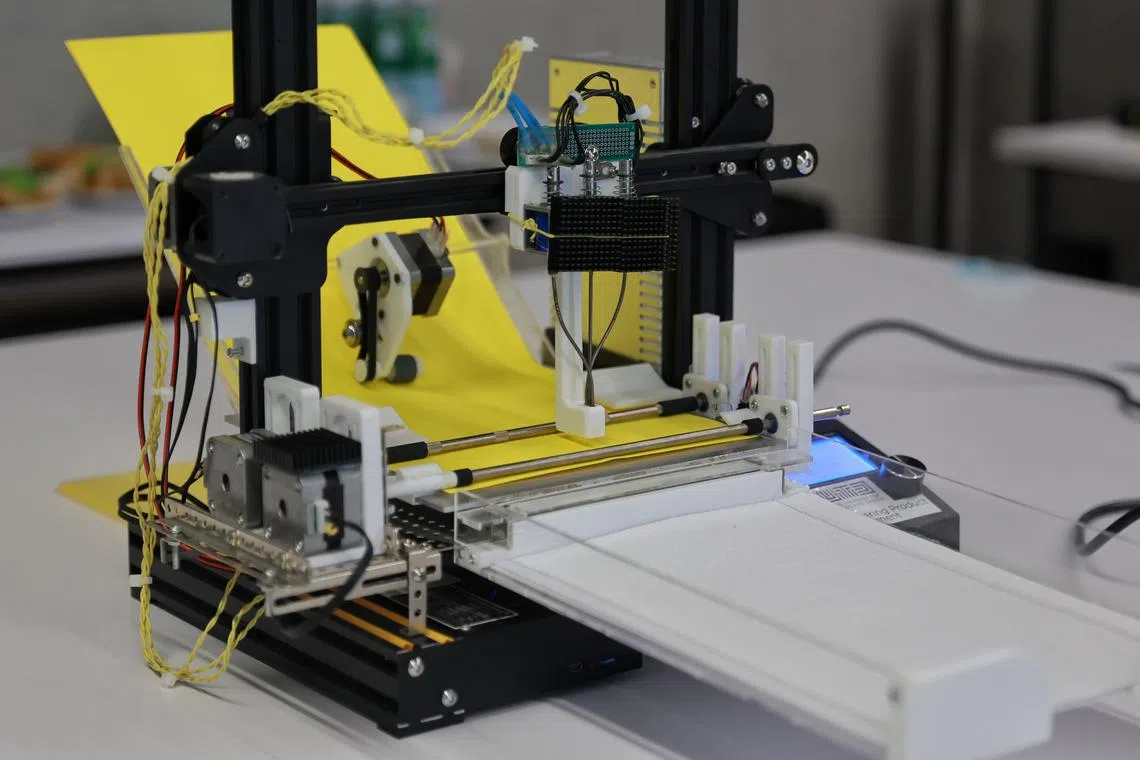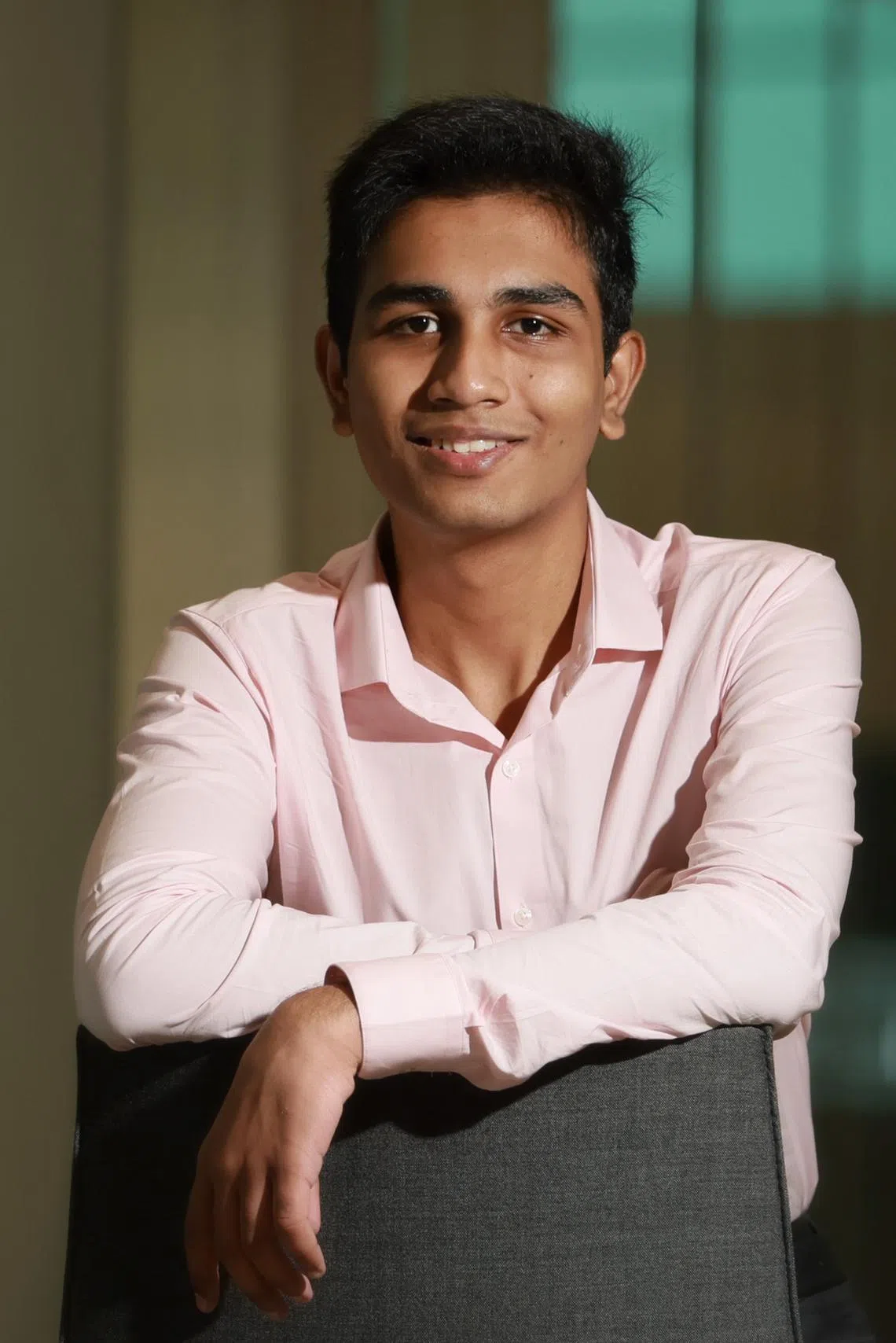Vest for open-heart surgery rehab is top Singapore winner of James Dyson Award
Sign up now: Get ST's newsletters delivered to your inbox

Mr Siew E Ian spent a year developing the Auxobrace after interviewing medical experts, surgeons, physiotherapists, nurses, and patients from NUH.
ST PHOTO: GIN TAY
SINGAPORE – Mr Siew E Ian, 24, was born with pulmonary stenosis, a heart defect where the large blood vessel that connects the right ventricle to the lungs is too narrow.
He has had open-heart surgery twice – the first when he was just a baby to open up the valve, and the other at 22 for a full valve replacement.
Mr Siew, who was studying for a degree in industrial design at the National University of Singapore (NUS), decided to combine his skills and health experience by developing a first-of-its-kind rehabilitation tool to accelerate the healing process for open-heart surgery patients.
He worked on the project as part of his final-year thesis in 2022, and later submitted it for the James Dyson Award. The research design engineer has since graduated.
The vest-like device called Auxobrace did well enough to be recognised as the 2023 Singapore national winner.
The annual international competition, which supports budding design engineers at the start of their careers, received 1,969 entries from 30 countries in 2023. There were 48 entries from across six universities in Singapore.
A panel comprising external judges and Dyson engineers assessed the entries and chose the national winner, who gets $8,000, and two runners-up. They stand a chance to win the top international prize in November.
Mr Siew said that after undergoing open-heart surgery, it can take about eight months to a year for the breastbone to heal completely. During that time, patients will either use a small pillow for wound compression to promote healing of the bones, or wear support braces with elastic bands.
Both options are not ideal, he said.
“The braces can create support only on the lower half of the ribcage and not the upper half because our armpit joint is in the way,” he said.
“Pillows are actually carriers of bacteria sometimes, because they are loose objects. When a patient brings it too close to the wound, there’s a higher chance of getting an infection.”
Mr Siew spent a year developing Auxobrace after interviewing medical experts, surgeons, physiotherapists, nurses, and patients from the National University Hospital who have recovered from open-heart surgery.
The rehabilitation tool has an internal structure that comprises mini cubes with precise gaps between them.
When a mini vacuum pump is used to remove air from the internal structure, the mini cubes close, which causes the fabric attached to it to shrink evenly.
This, in turn, causes a finger-like joint in the centre of the vest to bend inwards, applying optimal pressure to support the sternum bone.

Mr Siew E Ian wearing his invention, the Auxobrace, which provides compression to help bone healing after open-heart surgery.
ST PHOTO: GIN TAY
“Using myself as a testing ground, because I was a patient... accelerated the whole prototyping process,” said Mr Siew, adding that his invention has already been patented, and he is working with experts from NUS and the National University Health System to further develop and commercialise the product.
One of the competition’s runners-up in Singapore is Project Mimir by a team of five students from the Singapore University of Technology and Design (SUTD). They designed a Braille embosser meant for home use by repurposing 3D printer parts.
Instead of extruding plastic, the printer punches indentations into paper to form the tactile Braille characters. The visually handicapped would use the embosser to generate printed materials.

(From left) Sarah Loo, Kushagra Jain and Shamoeel Moochhala are Year 3 students from SUTD who designed Project Mimir.
ST PHOTO: GIN TAY
Mr Kushagra Jain, 21, a member of the Project Mimir team, said that visually handicapped people in Singapore do not usually have access to Braille embossers as they can cost about $9,000 or more. This puts many of them at a disadvantage because they cannot get access to easily printed material at a low cost, he said.
Project Mimir’s prototype was built for just $700, said Mr Jain, whose team hopes that the cost can be lowered when it is commercialised. “We are working with SUTD to try and further develop this, and we are looking at creating some commercialised versions of this. We will also make it more blind-friendly by making some kind of casing so that users would not touch the raw parts of the mechanism,” he added.

Project Mimir’s prototype was built for just $700, said Mr Jain, whose team hopes that the cost can be lowered when it is commercialised.
ST PHOTO: GIN TAY
The other runner-up in Singapore is a renewable energy project by NUS student Sparsh, 18, who goes by one name, and Indian Institute of Technology (Indian School of Mines) student Shivansh Anand, 19.
The duo created a device that converts solar thermal energy into electricity, and can be floated on water bodies such as hydroelectric dam reservoirs, wastewater treatment ponds, or reservoirs. This lets land-scarce countries like Singapore tap renewable energy.

National University of Singapore student Sparsh co-developed thermal floaters that can generate triple the electricity of a typical solar panel.
ST PHOTO: GIN TAY
Called thermal floaters, the 20cm by 20cm device can be arranged into an array the size of a solar panel to generate 10 kilowatt-hours of electricity – three times more than a typical solar panel of the same size and over the same amount of time.
Mr John Churchill, chief technology officer at Dyson, said: “The award serves as a launchpad to give young inventors the confidence and platform they need to bring their invention to the next level, and I look forward to more game-changing innovations from the next generation of young engineers.”
From the 90 finalists across 30 markets, a panel of Dyson engineers will select an international shortlist of 20 entries.
The top 20 projects are then reviewed by Sir James Dyson, who will select two international winners who will receive up to $48,000 each. International runners-up will receive $8,000 each.
The international top 20 shortlist will be announced on Oct 18, and the international winners on Nov 15.


